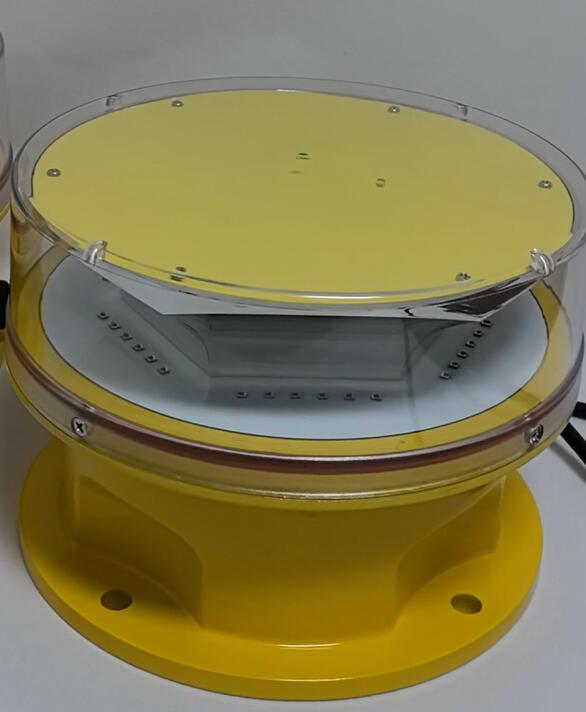
In the vast expanse of our modern world, where man-made structures reach for the heavens and air traffic crisscrosses the skies, tower obstruction lighting plays a crucial yet often overlooked role. These specialized lighting systems are designed to alert pilots and aviators to the presence of tall towers, ensuring the safety of both those in the air and on the ground.
The importance of tower obstruction lighting cannot be overstated. Tall towers, such as communication towers, wind turbines, and industrial chimneys, pose a significant hazard to aircraft. Without proper lighting, these structures can be difficult to see, especially during adverse weather conditions or at night. This increases the risk of a collision, which can have catastrophic consequences.
Tower obstruction lighting systems typically consist of a combination of high-intensity lights that are strategically placed on the tower. These lights are designed to be visible from a great distance and in all directions. They may be steady burning or flashing, depending on the specific requirements and regulations. The colors used are usually red, white, or a combination of both, as these colors are highly visible and easily distinguishable in the sky.
One of the key challenges in designing tower obstruction lighting is ensuring that the lights are reliable and effective. This requires the use of high-quality materials and advanced technology. The lights must be able to withstand harsh weather conditions, including high winds, rain, snow, and extreme temperatures. They also need to be durable and long-lasting, as replacing lights on tall towers can be a difficult and expensive task.
Tower Obstruction Lighting
RED
WHITE
LOW
HIGH
MI
In addition to being reliable, tower obstruction lighting must also comply with strict regulatory requirements. These regulations are in place to ensure that the lights are visible and effective, and that they do not cause interference with aircraft navigation systems. Different countries and regions may have different regulations, so it is important for tower owners and operators to be familiar with the applicable laws and standards.

The installation and maintenance of tower obstruction lighting is also a complex task. It requires specialized equipment and trained personnel. The lights must be installed at the correct height and spacing to ensure maximum visibility. Regular inspections and maintenance are necessary to ensure that the lights are functioning properly and that any damaged or malfunctioning lights are replaced promptly.
Despite the importance of tower obstruction lighting, there are still instances where towers are not properly lit. This can be due to a variety of reasons, including lack of awareness, cost considerations, or technical difficulties. However, failure to install and maintain proper obstruction lighting can result in serious consequences, including fines, legal liability, and, most importantly, a potential threat to public safety.
To address these issues, it is essential that tower owners and operators take their responsibility for obstruction lighting seriously. This includes ensuring that the lights are installed and maintained in accordance with regulatory requirements, and that they are regularly inspected and tested. It also means staying up-to-date with the latest technology and best practices in tower obstruction lighting.

Tower obstruction lighting is a critical component of air safety. It serves as a visible warning to pilots and aviators, helping to prevent collisions and ensure the safety of air travel. As our skies become more crowded and our man-made structures continue to grow taller, the importance of proper tower obstruction lighting will only increase. By understanding the importance of these lighting systems and taking the necessary steps to ensure their effectiveness, we can help to keep our skies safe for everyone.
Moreover, the development of advanced tower obstruction lighting technologies is ongoing. New materials and designs are being developed to improve the visibility and reliability of these lights. For example, some companies are exploring the use of LED lights, which offer several advantages over traditional lighting sources. LED lights are more energy-efficient, have a longer lifespan, and can be programmed to flash in specific patterns, making them even more visible to pilots.
In addition to technological advancements, there is also a growing awareness of the importance of tower obstruction lighting among the general public. As more people become aware of the potential hazards posed by unlit towers, there is increased pressure on tower owners and operators to ensure that their structures are properly lit. This can lead to greater compliance with regulatory requirements and a safer airspace for all.
Furthermore, cooperation between different stakeholders is essential for the effective implementation of tower obstruction lighting. This includes cooperation between tower owners and operators, regulatory agencies, and the aviation industry. By working together, these stakeholders can ensure that the right lighting systems are installed, maintained, and regulated, and that pilots are properly trained to recognize and respond to tower obstruction lights.
In summary, tower obstruction lighting is a vital part of air safety. It is essential that tower owners and operators, regulatory agencies, and the aviation industry work together to ensure that these lighting systems are effective and reliable. With the continued development of advanced technologies and increased awareness of the importance of tower obstruction lighting, we can look forward to a safer airspace in the future.